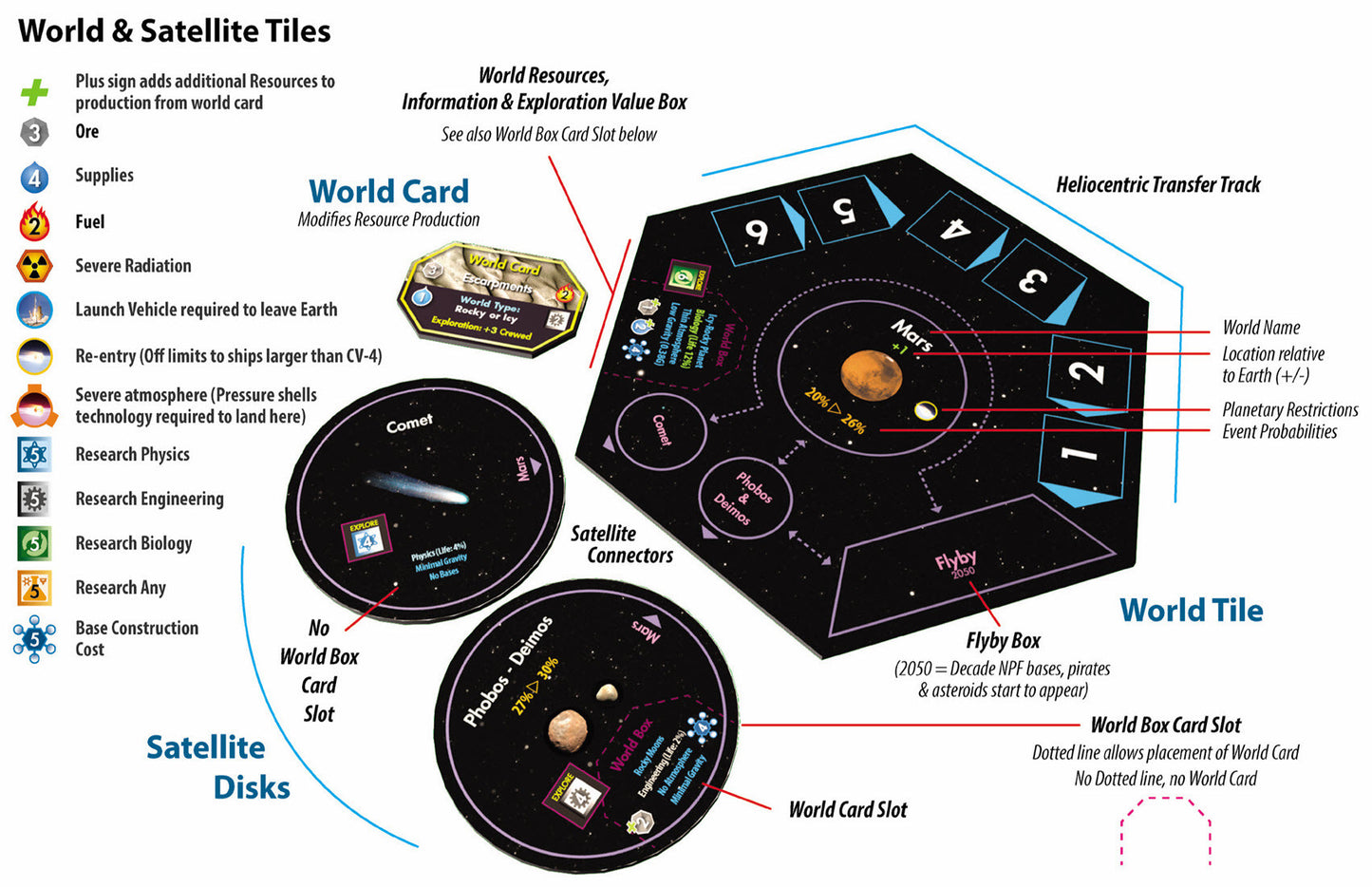Little Big Wars
Compass Games Stellar Horizons An Epic Game of Exploration and Expansion 1113
Compass Games Stellar Horizons An Epic Game of Exploration and Expansion 1113
Couldn't load pickup availability
Stellar Horizons is a "build your own space program" game in which you lead one of seven Earth factions to explore and develop our solar system. Designed by a real-life space engineer with a PhD in long-duration spaceflight from MIT, Stellar Horizons is intended to be a plausible representation of the first steps of humanity towards the stars between 2030 and 2169, with each turn representing a year of time. You control your faction's space program, outposts, and fleets spanning across the solar system, although you also have some influence over your faction's politics back home on Earth as space development becomes more important.
Movement is based on real physics. You move from orbit to orbit, or conduct long range transfers to move between planetary systems like Earth, Mars, or Jupiter. As you send out robotic explorers and crewed vehicles to explore the solar system, they bring back valuable data to further your scientific research. Technologies are intended to represent plausible extrapolations of existing development during the next 150 years: there are no transporters or warp drive, but you will be able to develop rockets powered by fusion and even anti-matter. In the engineering and biology domains, you'll eventually be able to construct space elevators and put your crews into safe hibernation for long journeys.
You'll have access to a wide variety of robot explorers and crewed ships. These range from tiny probes intended to merely take photographs as you fly past Jupiter, to giant destroyers, cruisers, and battleships which ply the space lanes with peaceful or hostile intentions. New ship types become available as you gain access to better technology over the course of the game.
You'll be given a budget to spend on Earth and can also build bases to harvest minerals, organics, and fuel to expands your economy. You can also forge diplomatic relationships with players and non-player factions alike, and trade resources at their bases to earn extra cash. Each of the five factions has different strengths, weaknesses, abilities, and available ships based on their unique geopolitical situation. Military conflict is certainly possible but not always encouraged. Stellar Horizons features more diplomatic, technological, and economic competition than outright combat, although neglecting warships entirely leaves you vulnerable to pirates, trade embargoes, and sneak attacks by rogue players and factions.
Stellar Horizons includes short co-operative and competitive scenarios lasting an hour or more, and campaigns lasting a day up to about a full weekend for experienced players. Up to seven players can play at a time and the game is most fun with at least two, but there are also one-player scenarios, and the campaigns are highly suited for solo play. There are three ways to win the campaign: be the first to develop an Interstellar Colonizer, terraform a world, or achieve dominance in space over your rivals.
Complexity: Medium
Time Scale: 1year/turn
Map Scale: The Solar System
Unit Scale: Manned and Robotic Starships
Players: 2 to 7
Solitaire Suitability: High
Playing Time: 1 - 20 hours
Contains:
- 1 Rulebook
- 20 Punchboards containing:
- • 231 Units – 33 for each faction
- • 1 Invader
- • 30 Mission markers
- • 2 Turn markers – 1 Year and 1 Decade
- • 8 Asteroid markers
- • 12 Signs of Life/Life markers
- • 12 Pirate markers
- • 15 Helio Transfer markers
- • 27 Trade markers
- • 90 Numbers – numbered 1 through 9
- • 182 Faction markers
- • 30 Damage markers
- • 100 Settlement markers
- • 130 Installation markers – 21 each of Supply Stations, Spaceports, Mining Stations, Refineries, and Research Stations, and 25 Defense Works
- • 40 Politics markers
- • 40 Victory point markers
- • 108 Technology number markers for Engineering, Physics, and Biology – in denominations of 1,2,3, and 5
- • 21 Technology bank markers – 3 for each faction
- • 2 Large Planet tiles – e.g. Jupiter
- • 2 Medium Planet tiles – e.g. Neptune
- • 8 Small Planet tiles – e.g. Earth and Alpha Centauri
- • 24 Satellite/Moon tiles – e.g. Hygeia-Palas and Triton
- • 1 Deep Space Astronomy tile
- • 54 World Cards
- • 29 Currency Coins in denominations of 1,2,5,10, and 25 Billion
- • 393 Resource markers – 131 each of Ore, Fuel, and Supplies in denominations of 1,2,5,10, and 25
- 4 Punchboards containing the 7 Player Faction boards and the Policy Tree
- 1 Punchboard containing the Tracks board
- 1 Technology Tree on a mounted board
- 4 Player Aids containing the various charts and tables needed to play and the Solar System and Space diagram
- 1 Percentile die and 3 ten-sided dice
- 1 Box and lid set
Share










